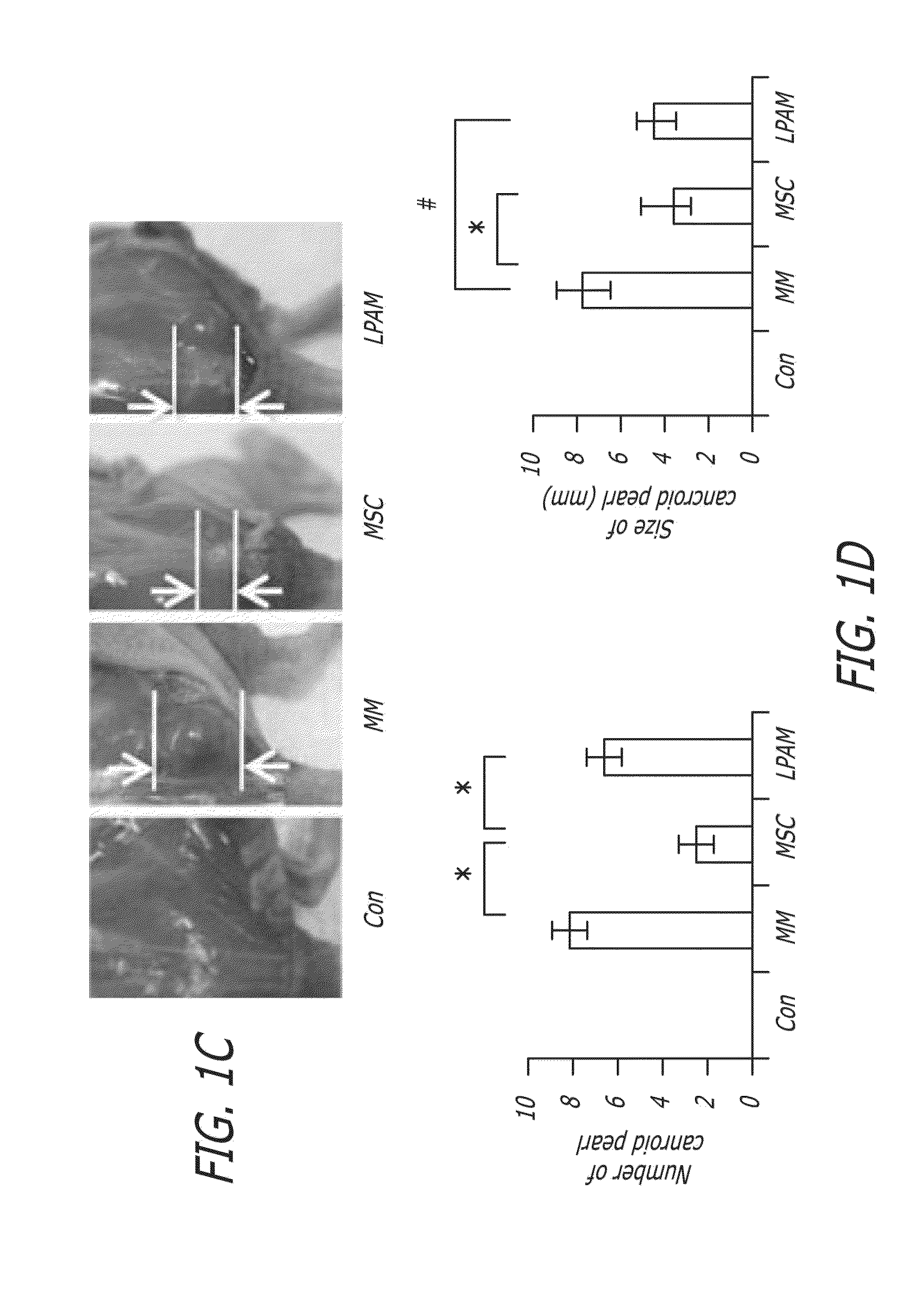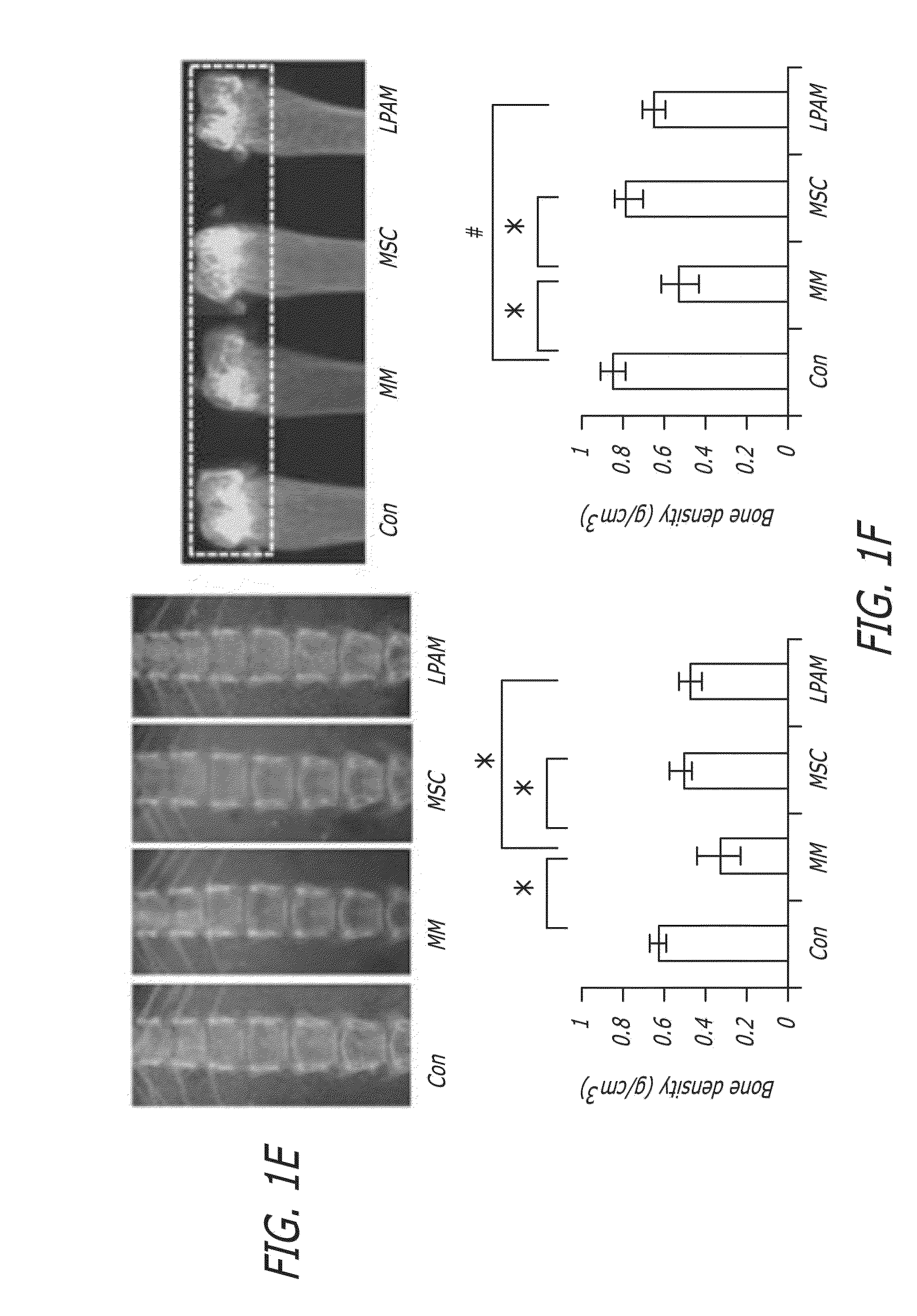Composition of stem cells having highly expressed fas ligand
a stem cell and ligand technology, applied in the field of stem cell treatment, can solve the problems of increasing the severity of skeletal complications, not all patients will respond to established treatments, and those who do respond to current available regimens, and achieves the effects of reducing the number of tumors, increasing the survival rate of mammals, and inhibiting tumor growth
- Summary
- Abstract
- Description
- Claims
- Application Information
AI Technical Summary
Benefits of technology
Problems solved by technology
Method used
Image
Examples
example 1
Materials and Methods
[0158]Multiple Myeloma Cell Line.
[0159]The 5TGM1 MM cell line used in the present study was subcloned from a stroma-independent cell line originally established from parent murine 5 T33 (IgG2bκ) MMs. See, for example, LeBlanc et al. “Proteasome inhibitor PS-341 inhibits human myeloma cell growth in vivo and prolongs survival in a murine model” Cancer Res 2002, 62:4996-5000. The entire content of this publication is incorporated herein by reference. The cell line was grown in long-term suspension culture in Isocove's modified Dulbecco's medium (Invitrogen Co., Carlsbad, Calif., USA) with 10% fetal bovine serum (Summit Biotechnology, Fort Collins, Colo., USA) and antibiotics. In the tracing experiment, MM cells were stained with carboxyfluorescein diacetate, succinimidyl ester (Invitrogen Co.).
[0160]Isolation of Bone Marrow Mesenchymal Stem Cells.
[0161]Bone marrow cells were flushed from the bone cavity of femurs and tibias of B6 mice (C57BL / 6 J) with about 2% hea...
example 2
Effects of MSC Infusion on Multiple Myeloma
[0178]The 6-week survival rates of mice were investigated in this example (for each mice group, n=14). The effect of MSC administration on the 6-week survival rates of MM model mice is shown in FIG. 1B. The survival rate of MM model mice, without any treatment by MSC or L-PAM administration (“MM group”), dramatically decreased until all mice died after about 6 weeks of feeding. MM model mice with MSC (“MSC group”) or L-PAM (“L-PAM group”) administration had the similar survival rate during the 6-week observation period (P>0.05). Although the survival rate of mice in the MSC group or the L-PAM group was lower than that in the Control group (original nude mice without MM cell injection) (P<0.05), the administration of either MSCs or L-PAM achieved prolonged survival compared with the MM group (P<0.05). No animal in the negative control group died (the original nude mice that did not receive any treatment) after about 6 weeks of feeding.
[0179]...
example 3
Effects of MSCs on Multiple Myeloma Cells Under Co-Culture Conditions
[0183]First, three testing co-culture groups were designed, where the number of MM cells was equal to or five to 10 times greater than that of MSCs. MM cells without MSC co-culture served as the control. In the control group, the MM cell number increased 2.5-fold over the initial cell number at about 24 hours after co-culture. When the initial number of MM cells was equal to or five times greater than that of MSCs, the inhibitory effect of MSCs on MM cell increase was apparent. However, no significant MM cell increase was observed when the number of MM cells was about 10 times the number of MSCs, as shown in FIG. 2A.
[0184]To determine whether the reduction was induced through MM cell apoptosis, caspase-3 and caspase-8 expression in MMs was determined through western blotting. The increased expression of cleaved caspase-3 and caspase-8 was observed in most MM cells after about 12 hours of co-culture, as shown in FIG...
PUM
 Login to View More
Login to View More Abstract
Description
Claims
Application Information
 Login to View More
Login to View More - R&D
- Intellectual Property
- Life Sciences
- Materials
- Tech Scout
- Unparalleled Data Quality
- Higher Quality Content
- 60% Fewer Hallucinations
Browse by: Latest US Patents, China's latest patents, Technical Efficacy Thesaurus, Application Domain, Technology Topic, Popular Technical Reports.
© 2025 PatSnap. All rights reserved.Legal|Privacy policy|Modern Slavery Act Transparency Statement|Sitemap|About US| Contact US: help@patsnap.com



